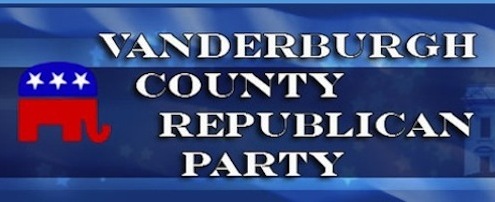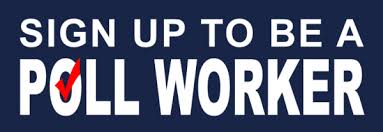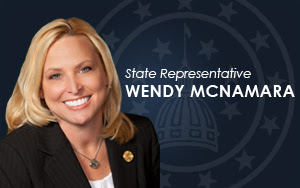https://www.vanderburghsheriff.com/jail-recent-booking-records.aspx
States, Hospitals Grapple With Medical Rationing
States, Hospitals Grapple With Medical Rationing
Over the weekend, the U.S. Department of Health and Human Services issued a reminder that people with disabilities have the same worth as everybody else.
That the agency felt compelled to issue such a directive reflects the anguishing choices that American medicine has begun to confront: When medical personnel, equipment and supplies are limited, who gets lifesaving care and who doesn’t?
The HHS bulletin appeared to respond to a complaint filed with the federal agency last week by Washington state groups that serve people with disabilities. The groups argued that a draft of an emergency health plan, proposed by Washington state health officials and hospitals, gave lower priority to those with disabilities.
State and local health departments across the country have developed detailed emergency health plans in recent years, often in response to major natural disasters, such as Hurricane Katrina, or outbreaks of diseases, such as the avian and swine flus. Many of these plans, such as those in Minnesota and New York, included guidelines for rationing care in the event of shortages of medical supplies or personnel.
Federal health agencies have not issued guidelines on how to make such decisions. For example, states say they don’t understand the criteria the federal government has been using in allocating limited medical resources from the U.S. stockpile.
At least some of the state plans include the sort of language that prompted the protest in Washington state. The emergency health plan Alabama drafted in 2010, for example, states that “persons with severe mental retardation, advanced dementia or severe traumatic brain injury may be poor candidates for ventilator support.†It’s unclear if that provision is part of the state’s current emergency plan.
On the front lines, medical providers are desperately trying to avoid choosing among patients. New York-Presbyterian Hospital, at the epicenter of the outbreak, began experimenting with sharing ventilators between two patients rather than one.
According to media reports, some U.S. hospitals already are considering issuing do-not-resuscitate orders for infected patients, regardless of the wishes of the patients. Among the hospitals identified as considering that option is Chicago’s Northwestern Memorial Hospital.
“We have not made any policy changes to patient care,†said Christopher King, a spokesman for the hospital. “What we have been doing, and similar to health systems around the country dealing with COVID-19, is conducting internal discussions and scenario planning on how to care for patients with COVID-19.â€
A Change in Decision-Making
To be sure, some medical professionals have long experience making such choices — those who have operated in war zones or provided care in the wake of natural disasters, for example. And doctors and hospitals often have to choose who will get healthy organs for transplants when precious few are available.
In the last decade or so, some states have expanded these conversations.
For example, in 2006 New York health officials created emergency protocols in response to an avian flu outbreak in Asia. Their guidelines addressed an issue rattling health systems now: how to ethically allocate ventilators when the supply doesn’t meet the demand.
“The clinical guidelines propose both withholding and withdrawing ventilators from patients with the highest probability of mortality to benefit patients with the highest likelihood of survival,†the New York guidelines state.
In Louisiana after Hurricane Katrina, lawmakers passed measures to indemnify health professionals when they were forced to determine which patients received life-sustaining treatments. The state also convened medical experts to draft plans to determine how those decisions should be made.
Most other states also began creating emergency health plans, especially after the H1N1 outbreak in 2009. Because of the sensitivity of the subject, many of those conversations occurred without public input, which drew some criticism for a lack of transparency.
Others are just now getting to it. New Jersey, for example, has created a bioethics committee that will meet this week to talk about how to parcel out ventilators and other lifesaving care.
The decisions about who should get care should not be based simply on who shows up first, said Nancy Berlinger, resident scholar of the Hastings Center, a New York-based research institution that studies bioethics. Berlinger directed the center’s production of guidelines for medically ethical considerations in the current outbreak.
“One principle that we articulate in our guidance is that ‘first come, first serve’ is not a satisfactory approach,†Berlinger said. “Just because you are part of the first wave shouldn’t give you a claim on a resource so that nobody who comes in after you has access to it.â€
Philip Rosoff, an emeritus professor of pediatrics at Duke University and longtime chairman of the Duke Medical Center ethics board, said decisions should be made on the best and most current clinical evidence and with one question uppermost: Who stands to best benefit from the limited quantity of lifesaving treatment?
Those guidelines, Rosoff said, should explicitly state that “allocations will be based on clinical evidence only and without consideration of social, ethnic, economic and other non-clinical considerations of people. You don’t want to exacerbate pre-existing social disparities that already prevail in this country.â€
Bioethicists say providers should focus first on a patient’s underlying health condition and whether that condition lowers the chance of recovery.
“If I have limited amounts of lifesaving treatment, and the chances of you responding well to it are 5% because of an underlying condition, and someone else who doesn’t have that condition has a 50% chance of doing well with it, what should you do? You have one treatment. Who should get it?†Rosoff said.
“That’s not discrimination; it’s just the way it is.â€
Rosoff agreed that such strategies would tend to favor young and healthy people over older ones, who are far more likely to have chronic and serious medical conditions.
“That being said, if two people come in and their clinical characteristics are such that they have an equal chance of survival, they should have an equal shot of getting on advanced lifesaving treatment,†Rosoff said, whatever their respective ages.
For years medical ethicists have debated whether age alone should be the deciding factor in determining who gets lifesaving care first. The idea that youth should be given preference even has a name, one derived from the sport of cricket: the fair innings argument. It posits that an older person has already had a chance to live a long life.
IRS Releases More Info On How To Get Coronavirus Stimulus Checks ASAP
IRS Releases More Info On How To Get Coronavirus Stimulus Checks ASAP
Treasury Secretary Steven Mnuchin said payments will go out “within three weeks” for people who have their direct deposit information on file with the IRS.
The IRS says it will use a person’s 2019 return to calculate eligibility and automatically send the money to those who qualify. If they haven’t filed a 2019 return, it’ll be based on the 2018 return.
The agency said it would publish additional information about the new forms soon on irs.gov/coronavirus.
Payments up to $1,200 per person, with an additional $500 per child under 17, will be made to U.S. residents with a Social Security number who earn under $75,000. The amount decreases by $5 per every $100 earned after that, zeroing out at $99,000. For married couples, the phase-out range is $150,000 to $198,000.
The IRS said Americans who weren’t required to file taxes in the last two years will have to file a “simple tax return” with basic information like filing status, number of dependents and bank information so the government can send the money.
“Low-income taxpayers, senior citizens, Social Security recipients, some veterans and individuals with disabilities who are otherwise not required to file a tax return will not owe tax,” the IRS said.
Treasury Secretary Steven Mnuchin said payments will go out “within three weeks” for people who have their direct deposit information on file with the IRS.
“We will create a web-based system for people where we don’t have the direct deposit they can upload it so that they can get the money immediately as opposed to checks in the mail,” Mnuchin said Sunday on CBS’ “Face the Nation.”
Number Of Long-Term Care Facilities With COVID-19 Cases Tops 400 Nationwide
Number Of Long-Term Care Facilities With COVID-19 Cases Tops 400 Nationwide
Signs from multiple states point to a rapid increase in cases in nursing homes and other long-term care facilities.
On Friday, a Washington state official told NBC News that 53 facilities had reported cases. New Jersey health officials announced Monday that 70 homes had cases. In New York, it’s 155, according to the state Health Department. Los Angeles County’s public health director announced Monday that the county had cases in 11 nursing homes
In other words, just those four jurisdictions, which make up one-seventh of the national population, account for nearly reported 300 cases, even though the CDC’s official total of 400-plus is for all 50 states.
And the number of cases in each home keeps rising. In Maryland, state officials say, one nursing home has more than 60 cases.
While some state and local facilities have provided the numbers of cases in nursing homes, federal and state officials are tight-lipped about naming the facilities.
Full coverage of the coronavirus outbreak
A CDC spokesperson declined to name the facilities, saying the agency does not collect the names. The CDC also did not provide a total number of infected residents in the 400-plus homes.
A spokesperson for the New York State Department of Health cited patient confidentiality in saying the agency would not name the 155 facilities statewide.
Reporters in Colorado and Rhode Island have had to submit open records requests to get lists of facilities with ongoing cases.
Nursing homes are required by the federal government to notify a sick resident’s family of an illness. They are not required to provide notification to relatives of other residents, according to the New York Health Department.
The Centers for Medicare and Medicaid Services did not respond to a request for comment about notification guidance to facilities.
Some families with loved ones in nursing homes say they have not received timely updates from the facilities themselves.
“I wish I could count on their communication, but now I’m going to the news for information rather than the facility,” said Niki Smith, a resident of Nashville, Tennessee, whose father is in Gallatin Center for Rehabilitation and Healing, a nursing home where more than 100 cases have been reported.
Smith said she learned of the cases when her brother called to say he had read about them on Facebook, as first reported by NBC affiliate WSMV.
CareRite, the New Jersey-based company that owns Gallatin, did not respond to a request for comment.
“We’ve encouraged facilities and family members to make sure they have the most updated emergency contact information, and we encourage facilities to continue to keep loved ones updated about residents and the entire facility,” said a spokesperson for the American Health Care Association, a long-term care industry trade group. “Each facility may have different ways they do that, so we have not given exact direction on how they implement that process.”
Experts Warn A Housing Crisis Shadows The Health Crisis
Rent’s Due. Now What? Experts Warn A Housing Crisis Shadows The Health Crisis
Wednesday marks the first of a new month, a day when rent comes due for millions of Americans for the first time since the coronavirus outbreak shuttered much of the country and caused widespread job losses.
Federal, state and local governments have scrambled to enact policies to keep renters whose sources of income have disappeared from getting evicted in the immediate future while treading carefully around measures that could adversely affect landlords and the real estate market at large.
But experts say the initial steps are nowhere near enough to protect low- and middle-income renters and handle what they say is the next biggest issue on legislators’ plates after ensuring the stability of the health care system.
“In terms of the across-the-board, really big, social policy, human need issue, this is it,” Andrew Scherer, a law professor at New York Law School, told NBC News of what he sees as an impending crisis. “This is what’s looming.”
More than 43 million American households are rental properties, although the Census Bureau says renters are historically undercounted given that “many of them are young and mobile, multicultural, or low-income.” Just last week, a record number of Americans, more than 3 million, filed for unemployment benefits, a number that is nearly certain to continue rising in the weeks ahead.
“This is a tipping point moment, where so many find themselves joining the ranks of the housing insecure,” said Paula Franzese, a law professor at Seton Hall University.
“More must be done … to protect low- and moderate-income renters,” she said. “Eviction pauses, while providing welcome temporary relief, are a mere stopgap measure that, without a forgiveness program for rent arrearages, only provide a brief respite from inevitable eviction.”
In the massive $2 trillion relief package, Congress provided a 60-day delay in foreclosures for borrowers with federally backed mortgage loans while allowing six months of forbearance for those experiencing economic hardship because of the outbreak. For those who’ve taken out federally backed mortgage loans for multifamily properties, the period will be 90 days, while those landlords won’t be able to evict or charge late fees to tenants who don’t pay rent over that time. Nor will they be able to initiate legal action against tenants.
The federal government also said it would provide many Americans with $1,200 checks, in addition to expanded unemployment benefits for those who’ve lost their jobs.
At the state and local levels, eviction moratoriums of varying lengths have been put in place. In New York, where the outbreak has hit hardest, the moratorium is among the longest, at 90 days.
California Gov. Gavin Newsom issued an executive order barring evictions through the end of May for those hit by the outbreak. Tenants must notify landlords within seven days of failing to pay and provide documentation proving their circumstances.
In Michigan, another hard-hit state, Gov. Gretchen Whitmer issued an executive order suspending evictions through April 17, while Arizona Gov. Doug Ducey announced $5 million in funding to assist those struggling with paying rent because of the outbreak.
For a variety of reasons, experts said, the moratoriums, while necessary in the short term, aren’t enough to deal with the housing crisis. For starters, the vast majority of renters don’t live in properties that are supported by federally backed mortgages. And unless further legal action is taken, there is nothing to stop a landlord from evicting a tenant as soon as the moratorium passes, seeking to collect rent immediately.
“I think that is a huge risk, and I don’t know if anyone has quite figured out the solution to that one,” Solomon Greene, a senior expert at the Urban Institute, a social and economic policy think tank, said of landlords’ being able to evict tenants once the moratoriums pass. “I don’t think that is hypothetical. I think that is likely to happen because we are seeing so many people losing their jobs.”
Asked Sunday for his message to renters, President Donald Trump said he believes landlords “are going to take it easy.”
Trump’s presidential rivals, former Vice President Joe Biden and Sen. Bernie Sanders, I-Vt., have backed calls for rent forgiveness over the near future. Biden called Tuesday for “a temporary ban on evictions nationwide.”
“No one should be forced out of their home in the middle of a pandemic,” he tweeted.
The movement to cancel rent is gaining the most ground in New York, where activists and lawmakers have called for it.
Democratic New York state Sen. Michael Gianaris recently unveiled legislation that would allow commercial and residential renters directly affected by the outbreak to skip paying rent over a 90-day period, while landlords could subtract the amount they lose from mortgages owed.
The apartment industry has cautioned about such measures, saying that while more needs to be done to protect renters, many landlords operate on small margins and wouldn’t be able to sustain substantial losses of income.
“Lack of rental income puts entire properties in jeopardy and will harm the nation’s limited rental housing supply,” said Greg Brown, senior vice president of government affairs for the National Apartment Association, one of the industry’s main trade groups.
“Even without money coming in, rental property owners still have basic financial obligations, including mortgages, property taxes, payroll, insurance and utilities — all expenses that bolster other sectors of the economy — and any relief measures must ensure owners’ financial obligations can still be met or delayed without penalty,” he said.
Meanwhile, the National Multifamily Housing Council, another apartment trade group, called on the industry to hold off on evictions for three months while developing payment plans for residents as part of a broader proposal it is promoting.
For rent forgiveness to work, Franzese said, the financial burdens “must be shared by federal and state government and the private sectors.” Otherwise, those “much-needed rent forgiveness policies unduly burden landlords who remain obliged to pay property taxes and remit mortgage payments.”
Robert Silverman, a professor of urban and regional planning at the State University of New York at Buffalo, said the amount needed to counterbalance the relief to renters would quickly make rent forgiveness “less and less popular” an option.
“You’d almost have to have, on the other side, some type of mortgage or tax forgiveness for landlords on their properties, and that part of the equation hasn’t really been talked about as much,” he said in an interview, adding that additional income subsidies to those renters would “help more because they, from the bottom up, try to address the whole problem in a systematic way.”
Ultimately, Scherer said, the federal government is in the best position to tackle the wider problem.
“It seems to me that if you can bail out the airline industry and the hospitality industry,” he said, “you certainly should be able to bail out people who’ve lost their jobs as a consequence of the crisis that we’re in.”
NAIA APPROVES OAKLAND CITY UNIVERSITY FOR FULL MEMBERSHIP
NAIA APPROVES OAKLAND CITY UNIVERSITY FOR FULL MEMBERSHIP; OCU WILL COMPETE IN THE RIVER STATES CONFERENCE
KANSAS CITY, Mo. – The National Association of Intercollegiate Athletics (NAIA) is pleased to announce the approval of five (5) institutions for membership, which will be effective July 1, 2020. Formal approval was voted upon by the NAIA Council of Presidents (COP) on March 31 at the annual NAIA COP Business Meeting.
New members include Oakland City University (Oakland City, Ind.), Park University Gilbert (Gilbert, Ariz.), Texas A&M University-San Antonio, University of North Texas at Dallas and Westcliff University (Irvine, Calif.).
“The NAIA is excited to welcome these five schools into our association,†said Jim Carr, NAIA President, and CEO. “Each of these institutions exemplifies the NAIA’s core values and will undoubtedly make great additions to their respective conferences, as well as the organization overall.â€
Oakland City will be returning to the NAIA from NCAA Division II, becoming the sixth school to move from the NCAA in the past five years. It will be immediately eligible for postseason competition, which is a benefit afforded to former members that return to the NAIA. With 14 sports, Oakland City boasts the largest athletics department among the newcomers.
The Mighty Oaks have been approved for membership in the River States Conference joining the other conference member institutions Alice Lloyd (Ky.) College, Asbury (Ky.) University, Brescia (Ky.) University, Carlow (Pa.) University, Indiana University East, Indiana University Kokomo, Indiana University Southeast, Midway (Ky.) University, Ohio Christian University, Point Park (Pa.) University, University of Rio Grande (Ohio) and West Virginia University Institute of Technology.
Oakland City University participated in the precursor of the River States Conference, known as the Kentucky Intercollegiate Athletic Conference from 1968-75. Founded in 1916, the KIAC rebranded in the summer of 2016 and changed its name to the River States Conference.
“The River States Conference is delighted to see Oakland City University return to the NAIA and the conference,†said Michael Schell, RSC Commissioner. “They have been
great to work with through the application process, and I look forward to seeing them compete this fall.â€
“Oakland City University is excited to return to the NAIA and especially the River States Conference,†said Dr. Ron Dempsey, President of OCU. “The institutions in the RSC will provide our intercollegiate Mighty Oaks tremendous competition, and we are looking forward to developing some intra-conference rivalries. As president, I am proud that OCU is able to associate with the NAIA and compete with such a stellar group of colleges and universities in the River State Conference.â€
The Mighty Oaks sponsors 14 sports teams –six men’s, seven women’s and one co-ed. Oakland City will participate in 13 of the 17 RSC Championship sports with the only exceptions being men’s and women’s indoor and outdoor track and field which OCU hopes to add by 2021.
About Oakland City University
OCU is a Christian university that offers high quality, career-focused degree programs in a Christ-centered, campus secure environment. The University is committed to the pursuit of knowledge and academic excellence but equally committed to providing students with a conducive environment for personal spiritual growth. Our Christ-centered values and relationships create a supportive environment that encourages students to live a life of Christian service in their chosen careers. Our talented faculty equip our students with the knowledge and expertise they need to lead healthy, productive lives and successful, fulfilling careers. Founded by the General Association of General Baptists in 1885, U.S. News and World Report has recognized Oakland City University as one of the top universities in the Midwest. In addition, OCU has been voted as one of the safest colleges and universities in the state of Indiana. The school holds the distinction of being accredited by the Higher Learning Commission (HLC) of the North Central Association of Colleges and Schools (NCA).
ABOUT NATIONAL ASSOCIATION OF INTERCOLLEGIATE ATHLETICS (NAIA)
The National Association of Intercollegiate Athletics (NAIA), headquartered in Kansas City, Mo., is a governing body of small athletics programs that are dedicated to character-driven intercollegiate athletics. NAIA members provide more than 77,000 student-athletes with opportunities to play college sports, earn $800 million in scholarships and compete in 27 national championships. www.naia.org | @NAIA
VANDERBURGH COUNTY PROPERTY TAX BILLS HAVE BEEN MAILED
VANDERBURGH COUNTY TREASURER
PROPERTY TAX BILLS HAVE BEEN MAILED
EVANSVILLE, IN – 3/31/2020
Approximately 97,000 property and personal property tax bills for Vanderburgh County have been mailed this week with Spring payment being due on or before May 11th, 2020. Fall payment due on or before November 10th, 2020.
Due to the COVID-19 crisis, Per Executive Order 20-05, the Governor has excused property tax penalties for 60 days.Â
FOUR WAYS TO PAY YOUR BILL AT THIS TIME
- Pay at the Treasurer’s drop box in front of the Civic Center @ 1 NW MLK Jr Blvd. Evansville, IN 47708
- Mail to – Vanderburgh County Treasurer  PO Box 77   Evansville, IN 47701
- Drive-thru at any Old National Bank location
- Website – www.evansvillegov/county.com (under government tab, choose Treasurer)
- Call 1-800-272-9829. Enter jurisdiction code 2405, option 1 for real estate or option 2 for personal property/mobile home
For More INFORMATION Call At DOTTIE THOMAS – CHIEF DEPUTY TREASURER   812-435-5257  dthomas@vanderburghgov.org
HAPPENINGS AT THE VANDERBURGH COUNTY GOP
|
|
|
Indiana Hospitals Asked To Double Ventilators, ICU Beds In Preparation For COVID-19 Surge
By Erica IrishÂ
TheStatehouseFile.comÂ
INDIANAPOLIS—Indiana state officials said Monday the expected surge in COVID-19 cases later this month will require new, aggressive actions from healthcare providers, including an effort to double the number of ventilators and critical care beds currently available and to hire more personnel.
Speaking alongside Indiana State Health Commissioner Dr. Kristina Box, representatives from the Indiana State Department of Health and other state leaders, Gov. Eric Holcomb said he is enacting two additional executive orders to ensure healthcare providers can react to the growing number of COVID-19 cases. The disease has sickened 1,786 and killed 35, according to ISDH data, and is not expected to peak until mid-to-late April at the earlier and could extend into May.

“There will be a beginning and a middle and an end to this pandemic,†Holcomb said “Right now, as our numbers are growing, I think it’s only appropriate to underscore the fact that as we see the surge coming, we see a true surge of Hoosier kindness and love and generosity.â€
The daily briefing, which had been held in-person at the Statehouse, was conducted via an online link that allowed journalists from across the state to participate.
The first executive order Holcomb discussed Monday directs healthcare centers, including dentists, abortion clinics and others, to cancel or postpone all non-emergency medical procedures so that more resources can be devoted to COVID-19.  The order also removes certain regulations to allow retired medical professionals, medical students and others who are eligible to help hospitals in their fight against the virus, among other provisions.
A second executive order will go into effect Tuesday and directs bars and restaurants around the state take to-go orders only, reiterating Holcomb’s initial directive that restaurants suspend in-person dining service on March 16.
The goal of Monday’s executive order, Holcomb said, is to ensure hospitals have the staff and supplies they need to ensure patients diagnosed with COVID-19 can live and recover.

The response to adding needed personnel, so far, has been positive: Around 5,300 medical professionals volunteered to serve as of Monday morning, according to state health officials.
In other areas, particularly in expanding critical care capacity and personal protective equipment availability, work remains to be done.
Dr. Jennifer Sullivan, secretary of the Indiana Family and Social Services Administration, said state leaders determined there were an estimated 1,177 ventilators available on March 1. Hospitals have been asked to reallocate ventilators used in elective surgeries to COVID-19 treatment, and other sources like the EMS and National Guard will contribute more as needed.
Sullivan added hospitals have managed to increase the number of intensive care unit (ICU) beds available around the state by about 35%, from a baseline 1,432 beds to around 1,940.
The state continues to lead efforts to distribute personal protective equipment (PPE) like N95 masks and gowns to healthcare providers, having made around 285 deliveries so far. But more is needed, and those who can donate supplies are asked to contact state leaders directly at COVIDResponse@iedc.IN.gov.
“In partnership with the State of Indiana, each hospital is identifying strategies to expand vital resources for the most affected by COVID-19 while shifting patients who need less intensive treatment to other settings,†representatives for the Indiana Hospital Association said in a statement.
Local officials are taking steps to respond to the consequences of the virus, too. Indianapolis Mayor Joe Hogsett led a video conference Monday morning with Michael Huber, president and CEO of the Indianapolis Chamber of Commerce, to announce new loans available to small businesses through a multimillion-dollar fund.
“To my knowledge, this is the largest investment the city has ever made in direct support for small businesses and entrepreneurs,†Huber said.
The fund, called the Rapid Response Loan Fund, currently has $3.7 million available to invest in eligible local businesses, who could receive anywhere between $1,000 and $25,000 in loans. But local officials said they hope to raise $10 million for the fund.
This weekend, U.S. Surgeon General and former Indiana State Health Commissioner Jerome Adams listed Indianapolis among several emerging hotspots for the virus around the country. Other cities included New Orleans, Chicago, Detroit and Miami.
Other groups continue to mobilize in response to the virus. The American Civil Liberties Union of Indiana, for example, submitted an emergency petition Monday to ask the Indiana Supreme Court to take new action to prevent disease spread in the Indiana Department of Correction and in county jails.
“People in jails and prisons have little ability to inform themselves about preventative measures, or to take such measures if they do learn of them,†said Jane Henegar, executive director of the ACLU of Indiana. “We must drastically reduce the number of people who are arrested and detained pretrial. Locking people up unnecessarily amid this pandemic, especially those who are medically vulnerable, threatens their health and, potentially, their lives.â€
In the press conference, Box said strike teams being led by the state department of health to assess high-risk areas like nursing homes are also surveying jails for the disease. Box added that if someone incarcerated were to test positive for COVID-19, they would be removed from their facility and sent to the hospital for isolation and treatment.
FOOTNOTE: Erica Irish is a reporter for TheStatehouseFile.com, a news website powered by Franklin College journalism students.
















